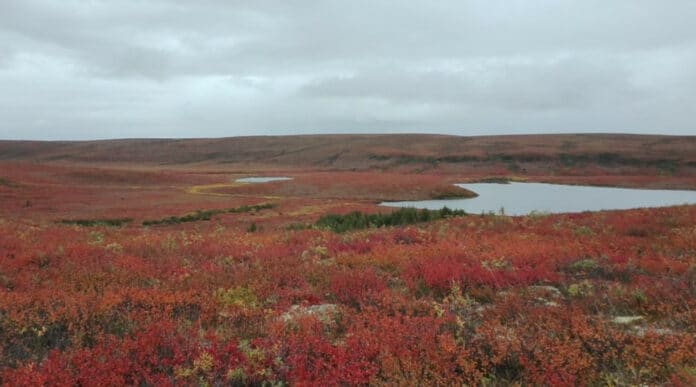In the Arctic and boreal biomes, more than 80% of the land surface is covered by well-drained upland soils with a high potential for atmospheric methane consumption. Despite the large upland coverage and potential importance for methane absorption, the underlying processes, environmental constraints, and even the amount of arctic soil methane uptake still need to be discovered.
A new study led by researchers from the University of Eastern Finland and the University of Montreal discovered that Arctic soil methane absorption might be more than previously assumed and that methane uptake increased under dry conditions and with the availability of labile carbon substrates.
Most of the research was done at Trail Valley Creek, a tundra location in the western Canadian Arctic. The scientists developed a novel experimental setup consisting of 18 automated chambers for continuous measurements of methane fluxes. There is no other automated chamber system this far north in the Canadian Arctic, and just a few exist above the Arctic circle globally, with the majority deployed at methane-emitting facilities.
Methane uptake was measured with high resolution (more than 40,000 flux measurements), revealing previously unknown diel and seasonal dynamics. While methane uptake in early and peak summer was largest in the afternoons, coinciding with the highest soil temperature, methane uptake in late summer peaked at night.
The new study found that the highest methane intake correlated with ecosystem carbon dioxide (CO2) respiration peaks. Combining flux data from Trail Valley Creek with those from other locations in Canada and Finland across the Arctic revealed that the availability of labile carbon substrates and nutrients may boost methane consumption in Arctic soils.
The new study has important implications for calculating the current Arctic methane budget and predicting the future response of Arctic soil methane absorption to climate change. High-latitude warming, which occurs up to four times faster in the Arctic than in the rest of the globe, will boost atmospheric methane absorption to a smaller amount than associated with large-scale dryness, according to the study.
In conclusion, the temporal and spatial dynamics of arctic soil methane (CH4) uptake using high-accuracy greenhouse gas analyzers and link flux patterns to microclimatic conditions and other abiotic and biotic controls.
Metsähallitus and the Aurora Research Institute provided funding for the fieldwork.
Journal Reference:
- Carolina Voigt, Matteo Detto, et al. Arctic soil methane sink increases with drier conditions and higher ecosystem respiration. Nature Climate Change. DOI: 10.1038/s41558-023-01785-3
